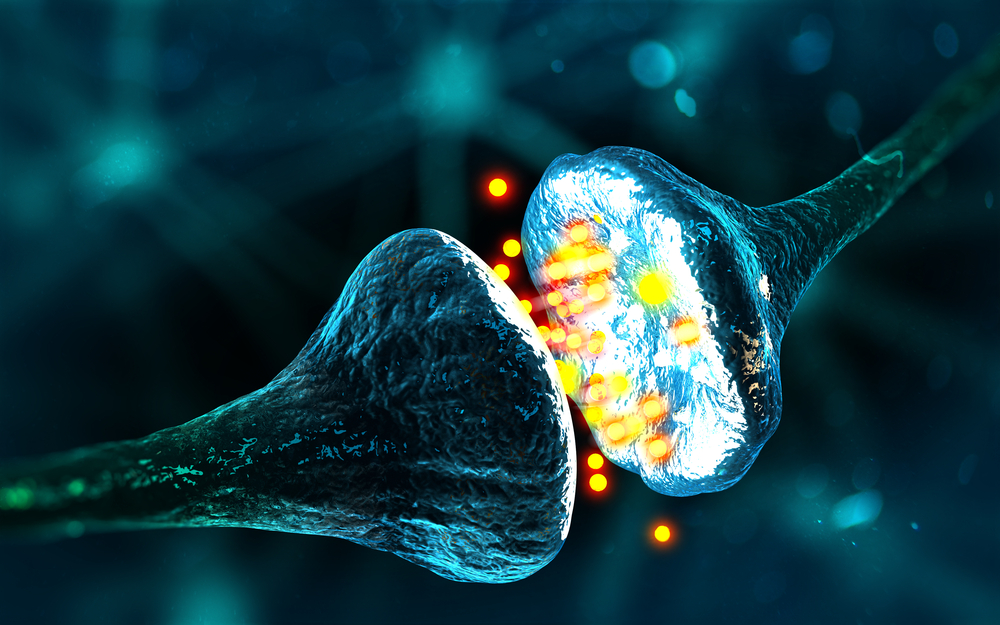Dopamine Neurons Participate in Forming New Long-term Memories, Study Shows

Dopamine-releasing neurons are important players in the formation of new, long-term memories, research shows.
These findings may help develop new therapies for memory disorders.
The study “Novelty-Sensitive Dopaminergic Neurons in the Human Substantia Nigra Predict Success of Declarative Memory Formation” was published in the journal Current Biology.
Nerve cells that produce dopamine — a chemical essential for nerve cell communication — facilitates the formation of declarative memories, a term for memories that can be consciously recalled or “declared”. These memories can stay with a person for a considerable time and are considered long-term memories.
Researchers at Cedars-Sinai examined the response of individual human dopamine neurons in 28 Parkinson’s or essential tremor patients undergoing deep brain stimulation (DBS) surgery — an established treatment for movement disorders. In the surgery, a device is implanted in the brain and sends electrical signals to brain areas responsible for body movement. The device is introduced deep inside the brain, and in close proximity to the area where dopamine neurons reside.
While undergoing DBS, patients were presented with a series of images, each belonging to one of three different visual categories (animals, landscapes, and fruits). Some images they never had seen before, and so were categorized as “novel” images, while others were repeated, falling into the “familiar” category.
“This procedure is one of the rare opportunities for researchers to observe the activity of dopamine neurons in an area of the brain called the substania nigra in an awake human being, a type of recording only possible because the patient is undergoing a neurosurgical procedure,” Adam Mamelak, MD, professor of neurosurgery at Cedars-Sinai and study author, said in a press release.
“This setup provides extremely valuable new insights into how humans form memories,” he added.
During the screening, patients pressed a button indicating if the image was “novel” or “familiar.” By evaluating patients’ responses researchers were able to track and evaluate the formation of new memories — a “novel” memory became “familiar” after a second visualization, something that was only identified if patients formed a memory.
The team identified 66 well-isolated single neurons recorded from the substantia nigra, which is the brain area responsible for reward and movement and that becomes significantly compromised throughout Parkinson’s disease.
Fourteen of 66 neurons changed their firing rate in response to image onset. Of those “image responsive” neurons, five increased their firing rate relative to baseline and responded significantly faster than those that decreased their firing rate. Firing rates are the average number of brief and uniform pulses of electrical activity to transmit information. Also, these neurons did not differentiate between the three visual categories (animals, landscapes, and fruits) present in the images.
Importantly, 25 percent of dopaminergic neurons responded only when seeing a novel image.
“What we discovered was that a subset of the dopaminergic neurons responded only when an image was novel, but not when it was familiar. In other words, it indicated if the image was new, but not if something was familiar,” said Jan Kaminski, PhD, the study’s first author.
“This is an important new scientific discovery, because it has so far remained unclear how the dopaminergic system contributes to episodic memory formation,” Kaminski said.
The results provide a new understanding of the mechanisms underlying neurodegenerative diseases, like Parkinson’s.
“Dopamine neurons degrade in neurodegenerative diseases such as Parkinson’s, which in addition to motor symptoms is often also accompanied by cognitive issues such as memory problems,” Rutishauser said.
“What this paper shows is that dopamine neurons activate for novel stimuli. This short ‘burst’ of dopamine is what triggers learning,” he added.
While therapies for Parkinson’s include medicines that increase the levels of dopamine, they however may not have any effect on the neuron-firing of dopamine that aids memory formation.
“Our work reveals new avenues for treatments that can be explored, including those that restore short bursts of dopamine or that otherwise increase activity analogous to what dopamine is thought to do,” Rutishauser concluded.






